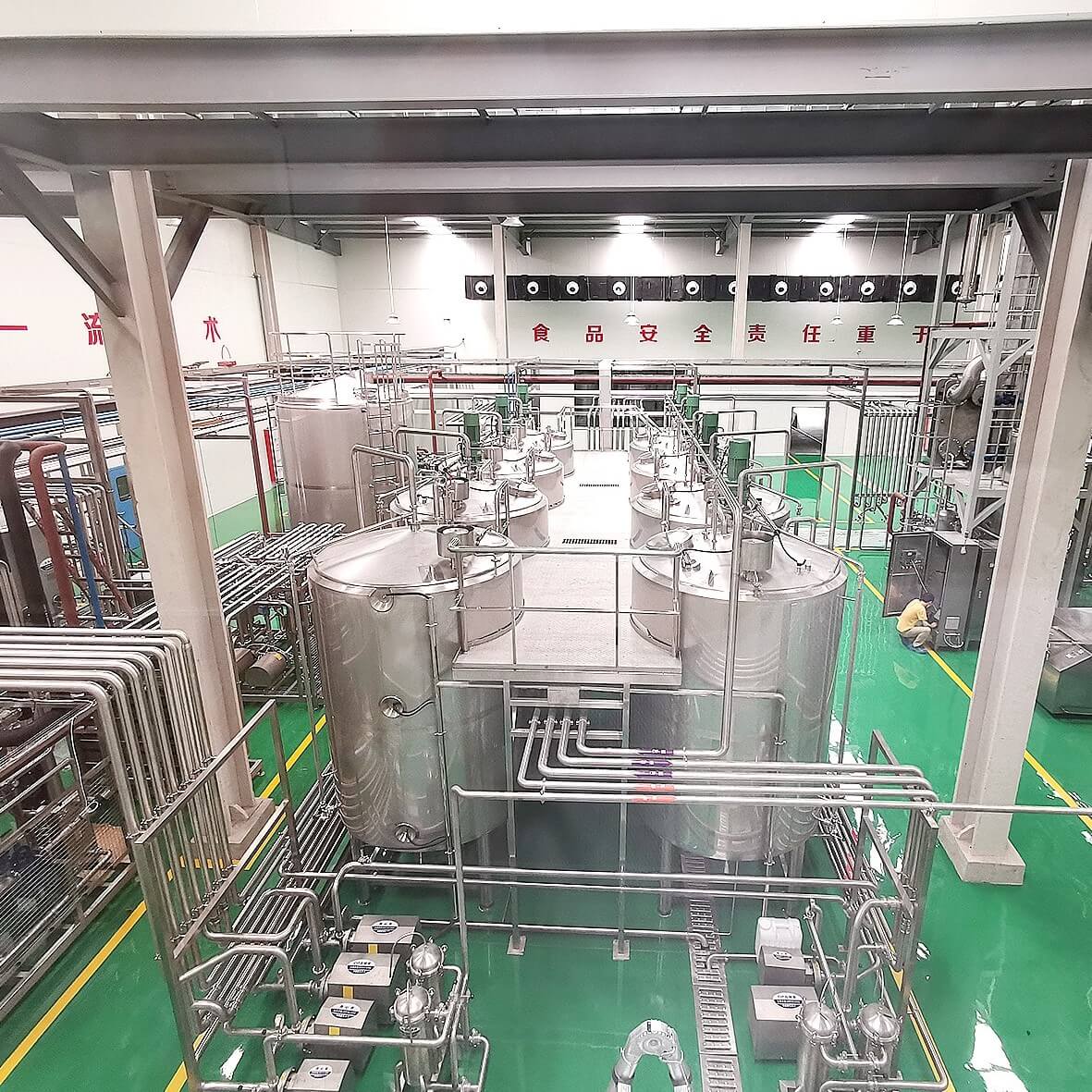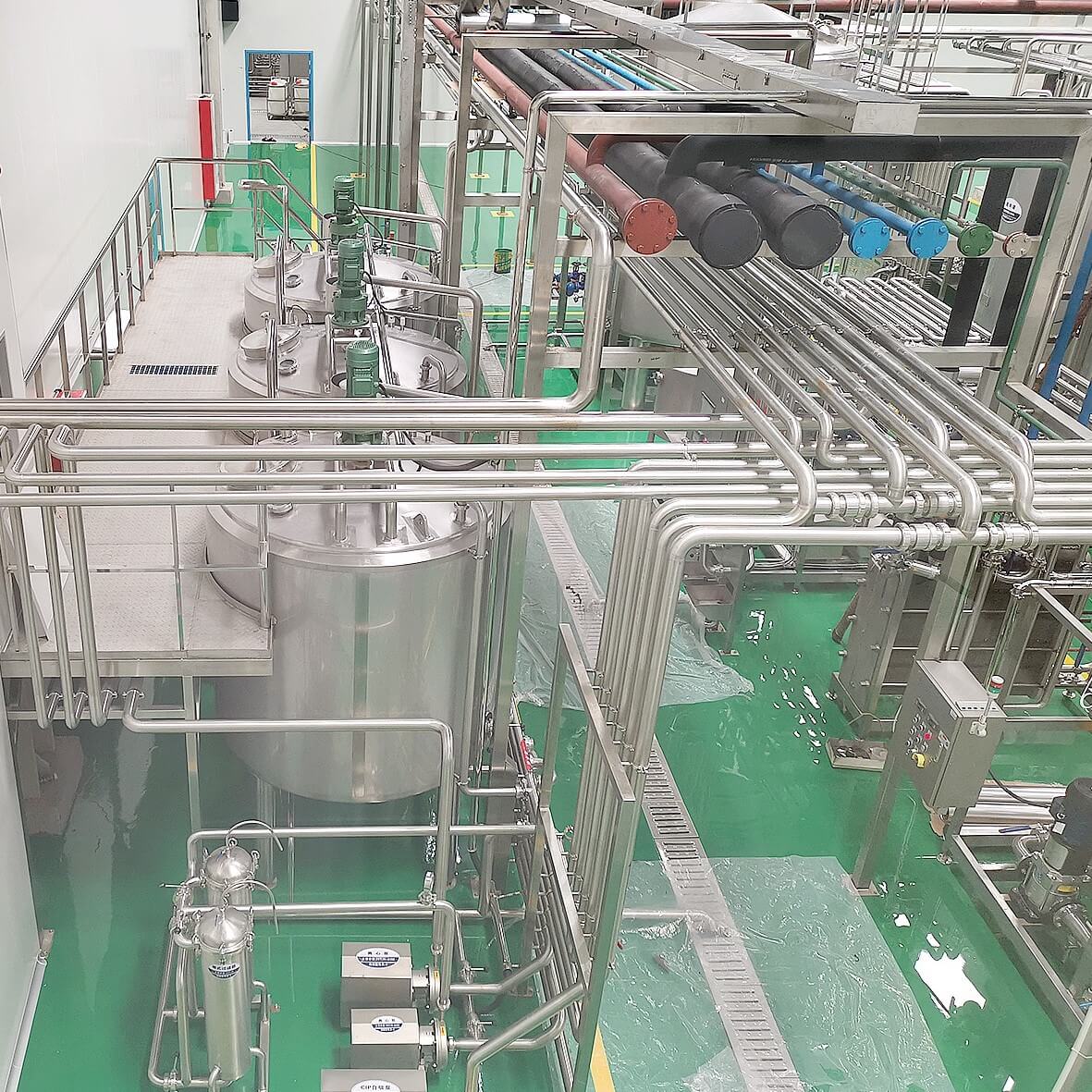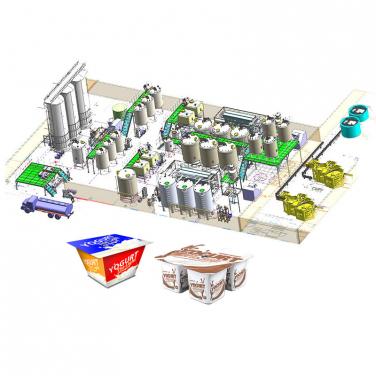
Small ultra-high temperature sterilized milk processing plants are usually used to produce and sterilize milk. The following are the main steps to establish such a factory:
1. Planning and research: Determine factory scale, production capacity, and product types and specifications. Conduct market research to understand local market demand and competition. Ensure understanding of laws, regulations, and safety standards.
2. Site selection: Select a suitable factory site and consider the convenience of power supply, water supply, and logistics. Attention should also be paid to environmental factors and surrounding facilities.
3. Raw material procurement: Ensure high-quality supply of fresh milk, and cooperate with local farms or dairy industries. Establish a stable supply chain and ensure the freshness and traceability of raw materials.
4. Factory equipment: Purchase necessary equipment, including milk receiving and storage equipment, sterilization equipment, filling lines, refrigeration equipment, etc. Select equipment based on factory size and budget.
5. Process flow: Designed for small-scale milk processing processes. This may involve steps such as removing foreign objects, adjusting fat content, homogenization, sterilization, cooling, and filling.

6. Quality control: The key to ensuring product quality. Establish inspection and monitoring procedures to ensure that milk meets hygiene standards and product specifications. If necessary, a third-party laboratory can be entrusted to conduct product testing.
7. Personnel training and safety: Train factory employees, provide relevant knowledge on food safety and hygiene, and ensure the correctness of equipment and operating procedures. Follow safety operating procedures and safety measures during the sterilization process.
8. Packaging and delivery: Choose appropriate packaging materials and methods to ensure the long-term freshness and safety of milk. Develop an optimized logistics plan to ensure timely delivery of products.
9. Regulations and Permits: Comply with local and national regulatory requirements and apply for the necessary permits and certifications. For example, food hygiene licenses and production licenses.
10. Marketing and sales: Promote milk products and establish appropriate sales channels, such as supermarkets, retailers, and online platforms. Enhance product awareness and sales through brand building and marketing activities.
It is worth noting that the above steps are only an overview, and actual operations should be adjusted and optimized according to the specific situation. In addition, ensure continuous monitoring and improvement throughout the entire process to improve production efficiency and product quality.
1. Milk receiving equipment: used to import raw fresh milk from storage tanks or tankers into the processing line. This includes milk pumps, filters, and preheating systems.
2. Sterilization equipment: used to sterilize milk to extend its shelf life and kill harmful bacteria. Common equipment includes ultra-high temperature sterilizers (UHTs), pasteurizers, and steam sterilizers.
3. Homogenization equipment: used to evenly disperse fat globules in milk to prevent fat separation and improve taste. Common equipment includes high-pressure homogenizers or ultrasonic homogenizers.
4. Cooling equipment: used to quickly cool sterilized milk to storage temperature. Generally, plate heat exchangers or tube coolers are used.

5. Filling equipment: used to fill milk into packaging containers. You can choose automated filling machines, such as capping machines, capping machines, and labeling machines.
6. Sterilization equipment: used to disinfect packaging containers during the filling process to ensure the hygiene and safety of the product. UV sterilizers or spray disinfection equipment can be used.
7. Packaging equipment: used to package milk into the final product form, such as plastic bottles, paper boxes, or bags. There can be filling and sealing machines, sealing machines, and packaging machines.
8. Refrigeration equipment: used to store and maintain the refrigeration temperature of milk. You can choose equipment such as cold storage, refrigerated trucks, or refrigerated cabinets.
9. Laboratory equipment: Used for milk quality testing and monitoring, such as pH instruments, density meters, bacterial detection instruments, and protein testers.
These devices may vary depending on production needs and the size of the factory. When selecting equipment, it is important to consider its quality, efficiency, reliability, and compliance with relevant health and safety standards.
Shanghai Beyond Machinery Co., Ltd
Beyond Machinery specializes in the design and manufacturing of small scale UHT milk processing plant. Please contact us now, and our professional technical engineers will customize the equipment plan for small scale UHT milk processing plant and provide a quotation. Please contact us now to obtain the latest equipment plan and quotation.



